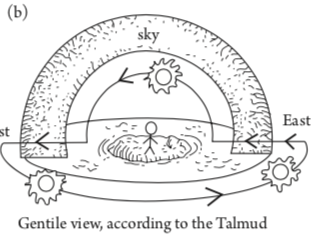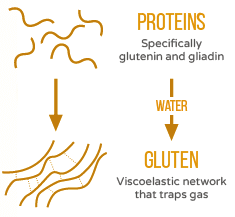In much of the Talmud snakes are associated with coma, convulsions and death. But occasionally - and paradoxically - they are sometimes associated with those healing, and those who heal. Let’s begin with this page of Talmud.
פסחים נו, א
תָּנוּ רַבָּנַן: שִׁשָּׁה דְבָרִים עָשָׂה חִזְקִיָּהוּ הַמֶּלֶךְ, עַל שְׁלֹשָׁה הוֹדוּ לוֹ, וְעַל שְׁלֹשָׁה לֹא הוֹדוּ לוֹ.
עַל שְׁלֹשָׁה הוֹדוּ לוֹ: גָּנַז סֵפֶר רְפוּאוֹת — וְהוֹדוּ לוֹ. כִּתֵּת נְחַשׁ הַנְּחשֶׁת — וְהוֹדוּ לוֹ. גֵּירַר עַצְמוֹת אָבִיו עַל מִטָּה שֶׁל חֲבָלִים — וְהוֹדוּ לוֹ
The Sages taught: King Hezekiah performed six innovative actions. With regard to three the Sages agreed with him, and with regard to three they did not agree with him.
With regard to three actions the Sages agreed with him: He suppressed the Book of Remedies, and they agreed with him. He ground the copper snake through which miracles were performed for Israel (Numbers 21:9), destroying it because it had been used in idol worship (II Kings 18:4), and they agreed with him…
You might have heard that the symbol for healing, that snake (or is it two snakes?) wrapped around a central pole, came from the episode to which today’s page of Talmud is referring. In Numbers 21 the Children of Israel complain that “there is no bread and no water, and we have come to loathe this miserable food.” So God sends fiery snakes “that bit the people and many of the Israelites died.” Let’s let the Good Book tell the rest:
7-10 :במדבר כא
וַיָּבֹא הָעָם אֶל־מֹשֶׁה וַיֹּאמְרוּ חָטָאנוּ כִּי־דִבַּרְנוּ בַיהוָה וָבָךְ הִתְפַּלֵּל אֶל־יְהוָה וְיָסֵר מֵעָלֵינוּ אֶת־הַנָּחָשׁ וַיִּתְפַּלֵּל מֹשֶׁה בְּעַד הָעָם׃
וַיֹּאמֶר יְהוָה אֶל־מֹשֶׁה עֲשֵׂה לְךָ שָׂרָף וְשִׂים אֹתוֹ עַל־נֵס וְהָיָה כָּל־הַנָּשׁוּךְ וְרָאָה אֹתוֹ וָחָי׃
וַיַּעַשׂ מֹשֶׁה נְחַשׁ נְחֹשֶׁת וַיְשִׂמֵהוּ עַל־הַנֵּס וְהָיָה אִם־נָשַׁךְ הַנָּחָשׁ אֶת־אִישׁ וְהִבִּיט אֶל־נְחַשׁ הַנְּחֹשֶׁת וָחָי׃
וַיִּסְעוּ בְּנֵי יִשְׂרָאֵל וַיַּחֲנוּ בְּאֹבֹת׃
The people came to Moses and said, “We sinned by speaking against the LORD and against you. Intercede with the LORD to take away the serpents from us!” And Moses interceded for the people.
Then the LORD said to Moses, “Make a seraph figure and mount it on a standard. And if anyone who is bitten looks at it, he shall recover.”
Moses made a copper serpent and mounted it on a standard; and when anyone was bitten by a serpent, he would look at the copper serpent and recover.
The Israelites marched on and encamped at Oboth.
But you’d be wrong. In fact the episode in the Bible and the fiery snakes that cured has nothing to do with this medical symbol of healing.
“From the beginning of the 17th century, the figure of Asklepios began appearing on medical medals and calling cards. The same pattern seen in antiquity emerged: The symbol was used only in a medical context, whereas the caduceus, although used by some medical organizations, was associated with other fields, especially commerce, communications, chemistry, and pharmacy”
snakes that heal
Here is the cover of Fred Rosner's book; notice what looks like two snakes wrapped around a winged pole. Compare that image with the insignia of the US Army Medical Corps below.
The image you see is the caduceus, the rod carried by the Greek god Hermes (known as Mercury when he was in Rome). But in fact this double-snake flying-rod has nothing to do with healing, and is erroneously -though very widely- used as a medical emblem. As an article in the Annals of Internal Medicine points out, the adoption of the double-snaked caduceus of Hermes - at least in the US - is likely due to its having been used as a watermark by the prolific medical publisher John Churchill.
The correct mythological association is with the Staff of Asklepios, the ancient Greco-Roman god of medicine. The opening lines of the Hippocratic Oath clearly reveal the central role occupied by Asklepios (and his mythologic daughters, Hygieia and Panakeia,) in the hearts and minds of the ancients: “I swear by Apollo Physician and Asklepios and Hygieia and Panakeia and all the gods and goddesses, making them my witnesses, that I will fulfill according to my ability and judgement this oath and this covenant . . .”
In one legend, a snake placed some herbs into the mouth of another serpent that Asklepios had killed, and the dead snake was restored to life. As a mark of respect, Asklepios adopted as his emblem a snake coiled around his staff. While the US Army Medical Corps uses the caducues as its badge, on its regimental flag the US Army Medical Command uses the more appropriate single snaked staff. Oh, and a rooster.
U.S. Army Medical Command Regimental Flag. Don't ask about the rooster...
Fortunately, the Israel Defense Forces clearly know a caduceus from an Asklepios. They adopted the correct Greco-Roman mythological symbol for the medical unit of the first Jewish army in 2,000 years.
The Greeks may have had their tradition, but we have ours. And as the Midrash notes, in ours, it is never the snake that heals.
“עשה לך שרף ושים אותו על נס, והיה כל הנשוך וראה אותו וחי. וכי נחש ממית או נחש מחיה? אלא בזמן שישראל מסתכלין כלפי מעלה ומשעבדין את לבם לאביהן שבשמים היו מתרפאים, ואם לאו היו נימוקים...
”Make a fiery snake and place it on a pole, and it will be that anyone who is bitten will look at it and live” [Numbers 21:8] But is a snake the source of life and death? Rather, the verse means that when Israel looked up and submitted their heart to their Father in Heaven, they were healed, but if they did not do so, they perished.”
[An encore post from here.]

















